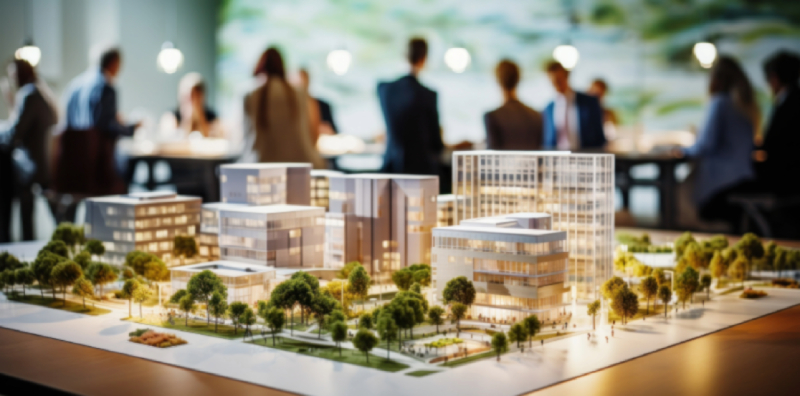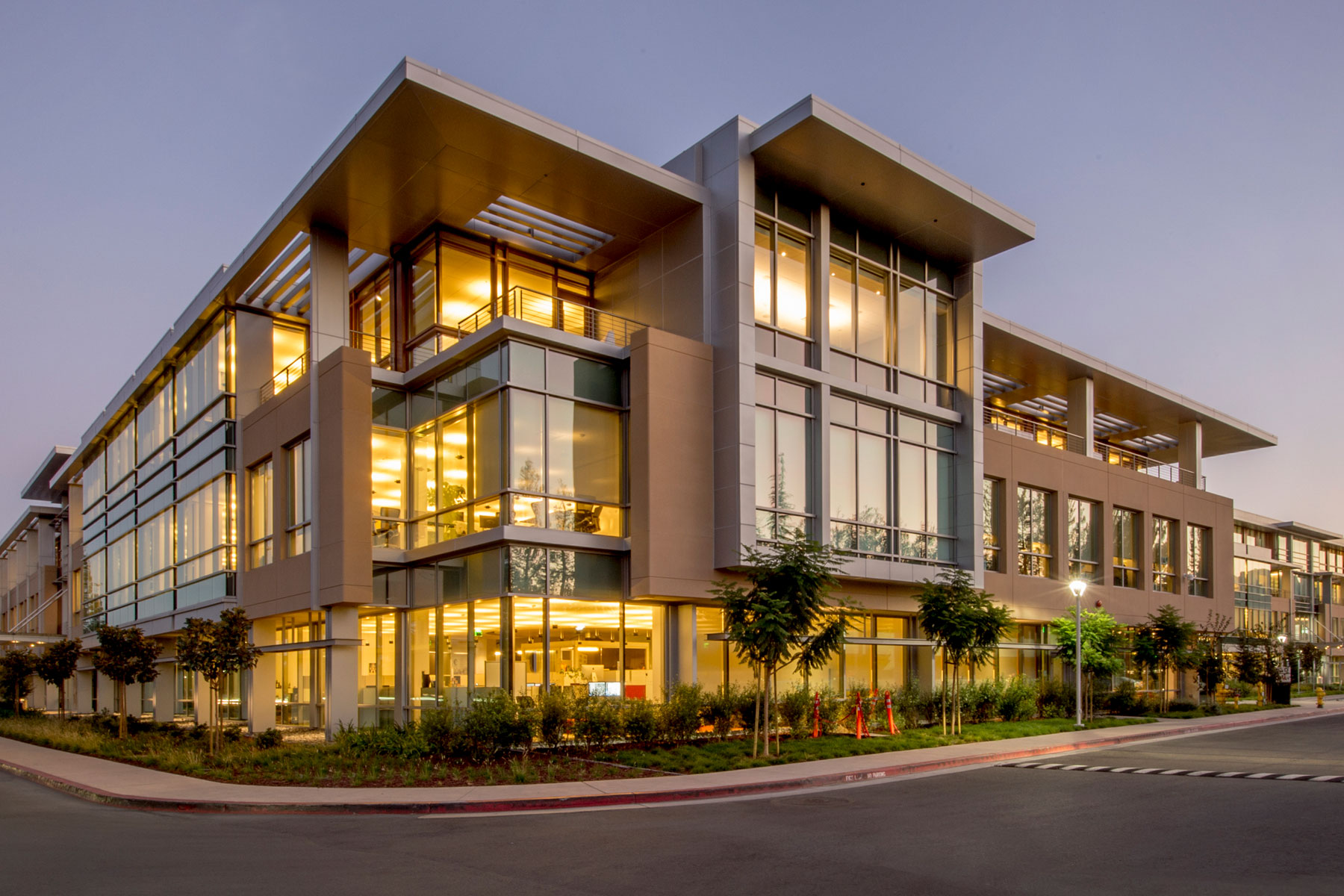How Commercial Architects Can Change Your Company Room With Professional Design Solutions
Commercial architects play a vital function in improving business environments. Their competence in style can considerably boost both functionality and looks. By developing rooms that reflect a brand name's identification, they boost operational performance and employee fulfillment. Nevertheless, the influence of their job expands past mere appearance. Recognizing the subtleties of partnership and sustainability can cause transformative outcomes. What details components make these makeovers effective?
Comprehending the Role of Commercial Architects
Commercial architects play a vital function in shaping business settings that are both functional and aesthetically pleasing. They focus on designing spaces customized to the particular requirements of businesses, guaranteeing that every square foot is used successfully. These professionals integrate aspects such as spatial design, lights, and products to enhance productivity and employee well-being. By teaming up with clients, commercial architects gather insights right into operational demands and brand identification, translating these into ingenious designs.Additionally, they browse intricate building codes and zoning legislations, making certain conformity while making best use of style potential. Their competence encompasses sustainability practices, promoting power effectiveness and environmentally friendly materials in their projects. Via their innovative vision and technological understanding, business architects not just produce appealing areas but likewise foster atmospheres that advertise collaboration and growth. Ultimately, their contributions significantly affect the total success and picture of an organization.
Benefits of Specialist Style Solutions

Customizing Rooms to Your Brand Identity
Tailoring areas to a brand name's identification is vital for communicating its core values and goal. Commercial architects play a pivotal role in boosting an organization's aesthetic identification via thoughtful layout selections. By aligning building elements with brand name principles, companies can create environments that reverberate with clients and workers alike.
Showing Brand Worths
Exactly how can a properly designed room embody a company's core values? Commercial architects play a critical duty fit environments that reverberate with a brand's identification. By incorporating aspects such as color pattern, products, and formats, they produce rooms that mirror the significance of the organization. A technology business could choose for open designs and modern-day furnishings to convey development and partnership, while a deluxe brand may pick stylish finishes and intimate rooms to stimulate exclusivity and elegance. Thoughtful style not just enhances performance however likewise fosters a strong link in between employees, clients, and the brand. Ultimately, a well-crafted atmosphere serves as a substantial depiction of a firm's goal and vision, enhancing its values at every touchpoint.
Enhancing Aesthetic Identification
What components can successfully elevate a brand name's visual identity within a business room? Commercial architects play a crucial role in incorporating design features that reverberate with a business's principles. Shade schemes, typography, and materials can be strategically picked to reflect brand name values while making sure visual appeal. In addition, incorporating logo designs and brand name imagery right into the style can develop a cohesive visual narrative. Lighting design can further improve the atmosphere, assisting consumer understandings and experiences (commercial architects). Layout and furnishings choices ought to line up with the brand's individuality, whether it's contemporary, typical, or innovative. Ultimately, a properly designed business room not just attracts customers yet also reinforces brand name recognition, creating a long-term perception that promotes loyalty and interaction
Enhancing Functionality and Efficiency
Enhancing capability and performance in commercial spaces involves enhancing space use and developing process that enhance operations. Architects concentrate on developing layouts that minimize thrown away area while facilitating smooth modifications between jobs. This method not just boosts performance however likewise adds to an extra natural working setting.
Optimizing Area Application
Efficient room utilization is a vital variable in industrial architecture, where the design has to stabilize looks with functionality (commercial architects). Architects use different approaches to maximize readily available square video footage while making sure that each location serves an unique objective. By examining operations, web traffic patterns, and user needs, architects can create designs that enhance both worker performance and client experience. Multi-functional areas, adaptable furnishings plans, and optimized storage solutions are vital elements in achieving this objective. Additionally, incorporating natural light get more and open spaces promotes a more inviting environment, additional elevating the utility of the atmosphere. Inevitably, effective room application not just boosts functional efficiency yet likewise adds positively to the total brand image, making it a necessary factor to consider in business style
Streamlined Operations Design
How can a properly designed operations transform an industrial room right into a center of efficiency? Structured process design concentrates on optimizing the physical format and functional processes within a company environment. By purposefully preparing workstations, meeting areas, and resources, architects can get rid of unneeded movement and boost partnership. This thoughtful layout reduces interruptions and facilitates interaction, allowing employees to concentrate on their jobs much more effectively. In enhancement, integrating innovation right into the process can better automate procedures, reducing time invested on regular jobs. Because of this, companies experience boosted worker morale and enhanced outcome, developing a dynamic environment that fosters technology. Eventually, spending in streamlined process style not only improves capability however additionally positions a commercial area for lasting development and success.
Fostering Collaboration With Style
Although modern-day workspaces commonly prioritize specific efficiency, the style of business spaces progressively highlights cooperation as an essential chauffeur of innovation and team communication. Architects play an important duty in producing settings that cultivate communication among employees. Open up designs, multifunctional spaces, and purposefully put public locations motivate spontaneous discussions and brainstorming sessions.Incorporating aspects such as movable furnishings and adaptable conference room enables teams to reconfigure rooms based on their collaborative requirements. Additionally, integrating innovation, like interactive whiteboards and video conferencing tools, improves the capability to connect successfully, regardless of location.Natural light and biophilic style aspects likewise contribute to a much more welcoming environment, promoting comfort and wellness, which are important for productive team effort. By concentrating on these elements, industrial architects can develop vibrant settings that not only enhance collaboration yet likewise drive total company success.
Sustainable Style Practices in Commercial Style

Instance Studies: Effective Makeovers by Commercial Architects
The execution of sustainable design methods has not only reshaped the method to commercial architecture however has also brought about remarkable improvements in numerous company spaces. One noteworthy instance is the redesign of a technology business's headquarters, where architects integrated natural light and green wall surfaces, resulting in enhanced employee well-being and productivity. This makeover lowered energy expenses by 30% and improved the business's public image.In one more circumstances, a store underwent a total overhaul, using recovered materials and energy-efficient systems. This not just drew in eco-conscious customers but also raised foot website traffic by 25%. A third case involved a business workplace that accepted an open-plan design with flexible work spaces, promoting collaboration among teams. The architects' concentrate on creating a vibrant and versatile environment considerably boosted staff member satisfaction. These study exhibit how commercial architects can create impactful areas that align with business goals and sustainability initiatives.
Often Asked Inquiries
Exactly How Much Do Commercial Architecture Solutions Typically Expense?
The expense of commercial architecture solutions varies widely, commonly varying from $100 to $250 per hour. Aspects influencing rates consist of project complexity, place, and the designer's experience, making it important for services to obtain comprehensive price quotes.
What Kinds Of Businesses Profit Most From Commercial Architects?
Different businesses, including retail, hospitality, and corporate workplaces, significantly benefit from industrial architects. These specialists boost functionality, appearances, and brand identification, ensuring spaces are enhanced for client engagement and worker efficiency, eventually promoting organization development.
For how long Does a Commercial Layout Task Usually Take?
The timeline for a business style job commonly ranges from numerous weeks to several months. Aspects influencing period include task complexity, regulatory approvals, and cooperation amongst stakeholders, every one of which can influence total completion time.
Can I Employ a Business Architect for Improvements Just?
Yes, working with a commercial designer for restorations is viable. Lots of architects concentrate on renovation jobs, providing expertise in maximizing existing areas while adhering to policies and boosting functionality, aesthetics, and overall value of the business atmosphere.
What Certifications Should I Search for in an Industrial Engineer?

Comments on “What It’s Like to Work With commercial architects from Concept to Completion”